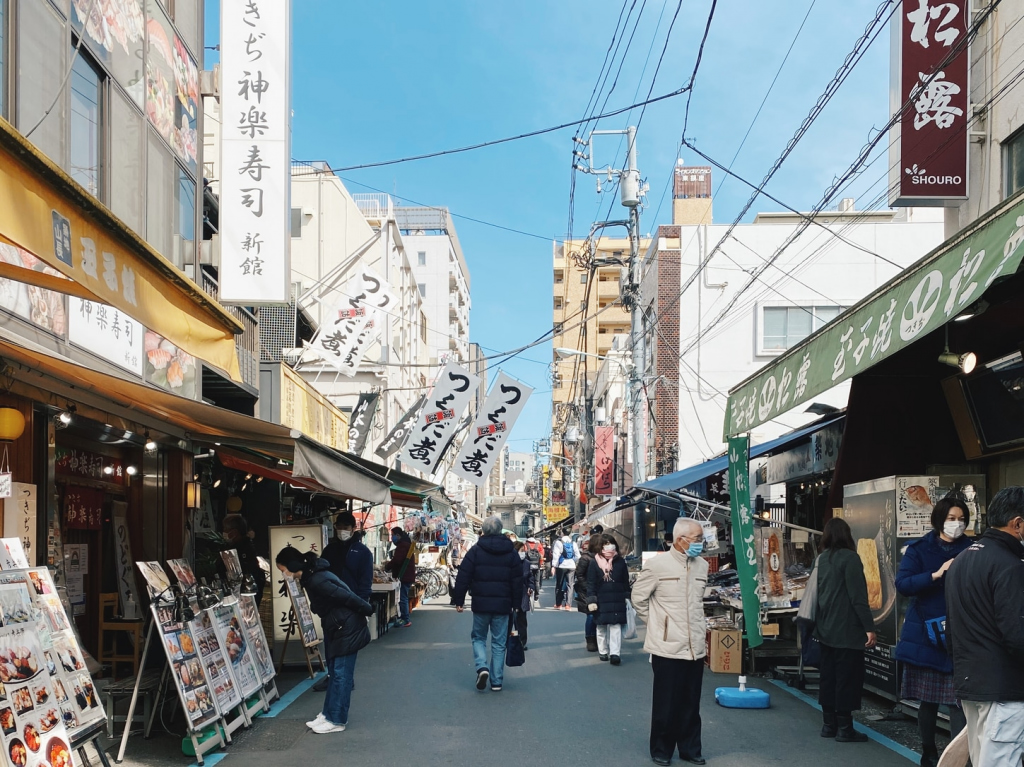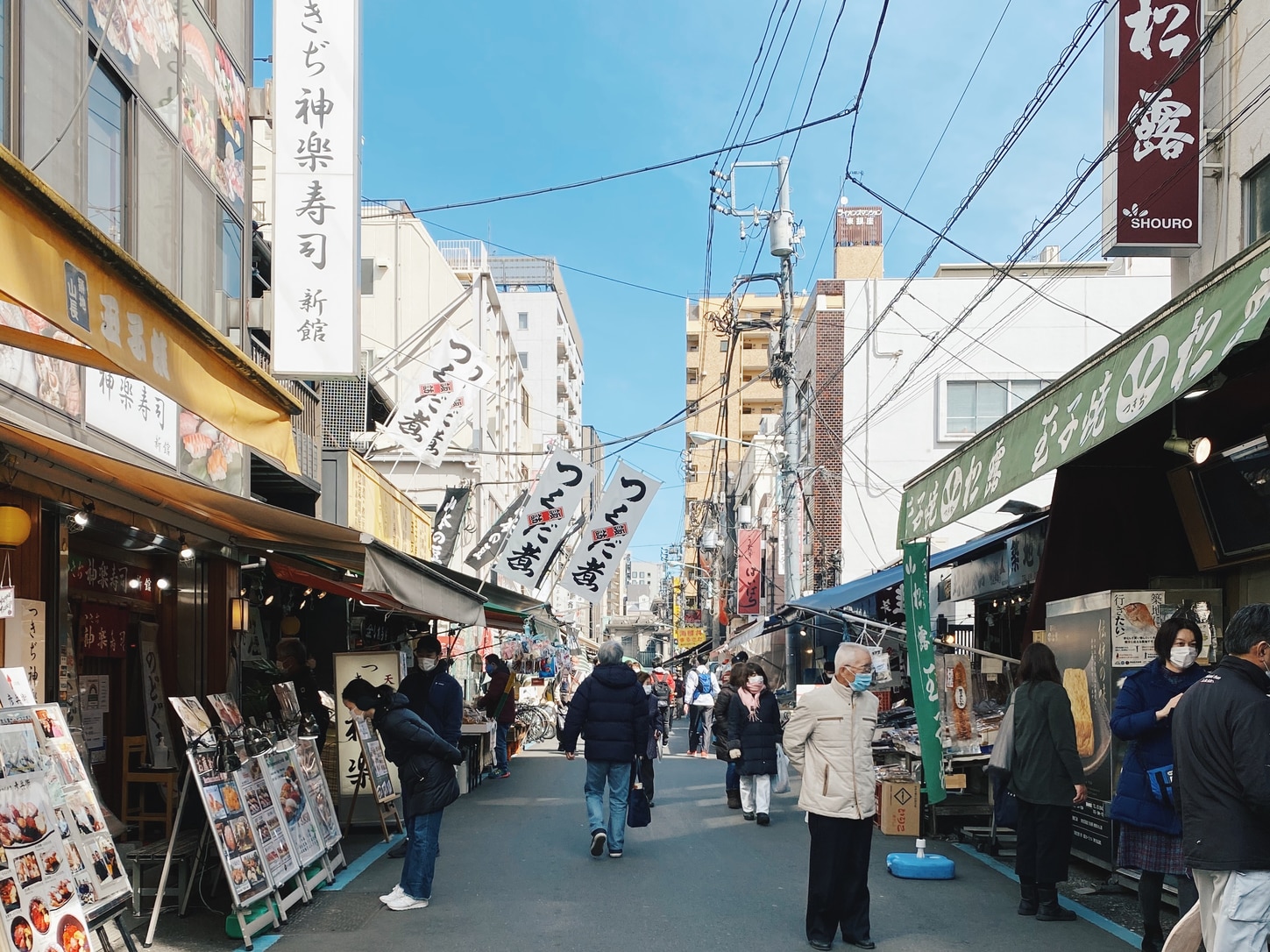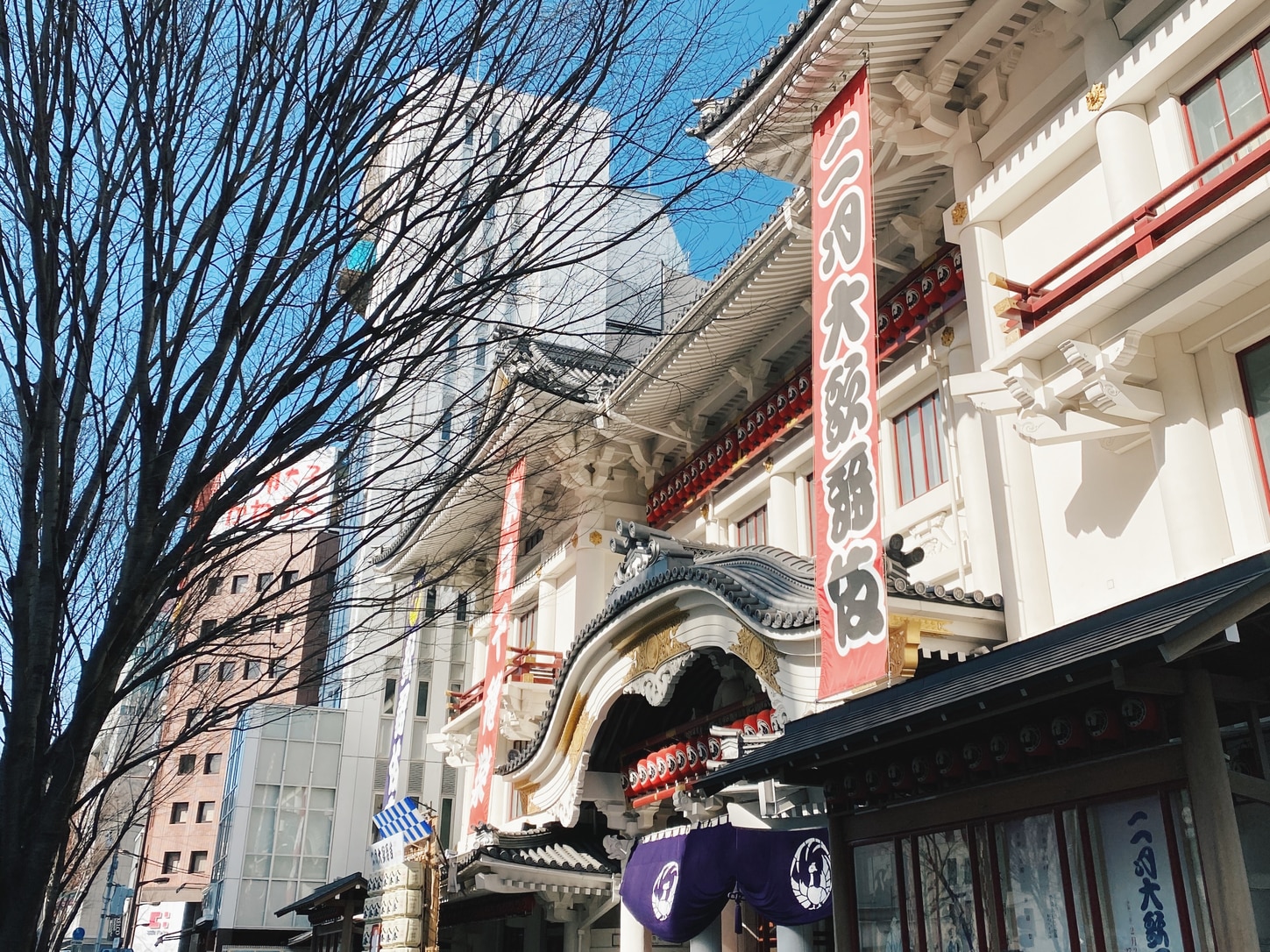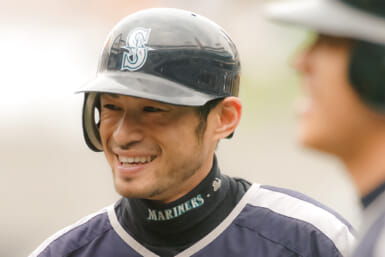Just because the once-famous tuna auction moved out of Tsukiji in 2018 doesn’t mean travelers shouldn’t miss out on this area well worth a wander. With a combination of local shops, cultural landmarks and proximity to high-street shopping, today’s Tsukiji offers just about anything you would want to do on a day trip to Tokyo.
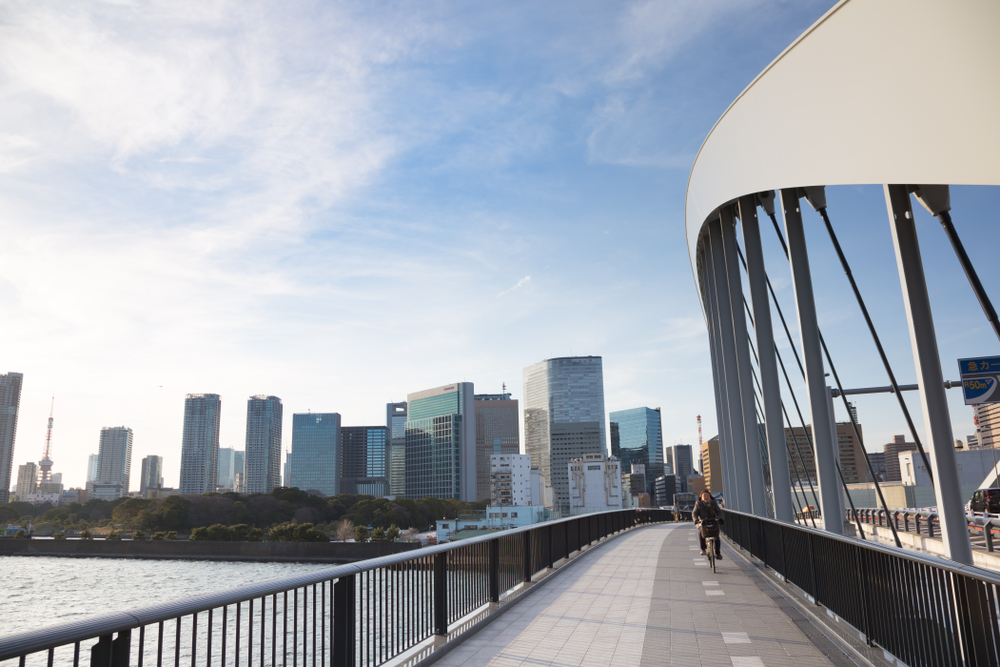
(Source: Shutterstock)
1. Kachidoki Bridge
Take a walk across Kachidoki Bridge, the last of 27 bridges that cross Sumida River. Kachidoki is a bascule bridge with a lifting system at its halfway point that would make way for massive cargo making their way to and from Tokyo Bay. Though you won’t see any big ships wait for the bridge to lift anymore, it is a charming scenic spot. Breathe in the fresh air and let your mind wander as you look to the city skylines on either side. Locals say the landscape is particularly striking at night when the bridge lights come alive and yakatabune sail through underneath with their party atmosphere in tow. History buffs will also be happy to know there is also a dedicated Kachidoki Bridge museum nearby.
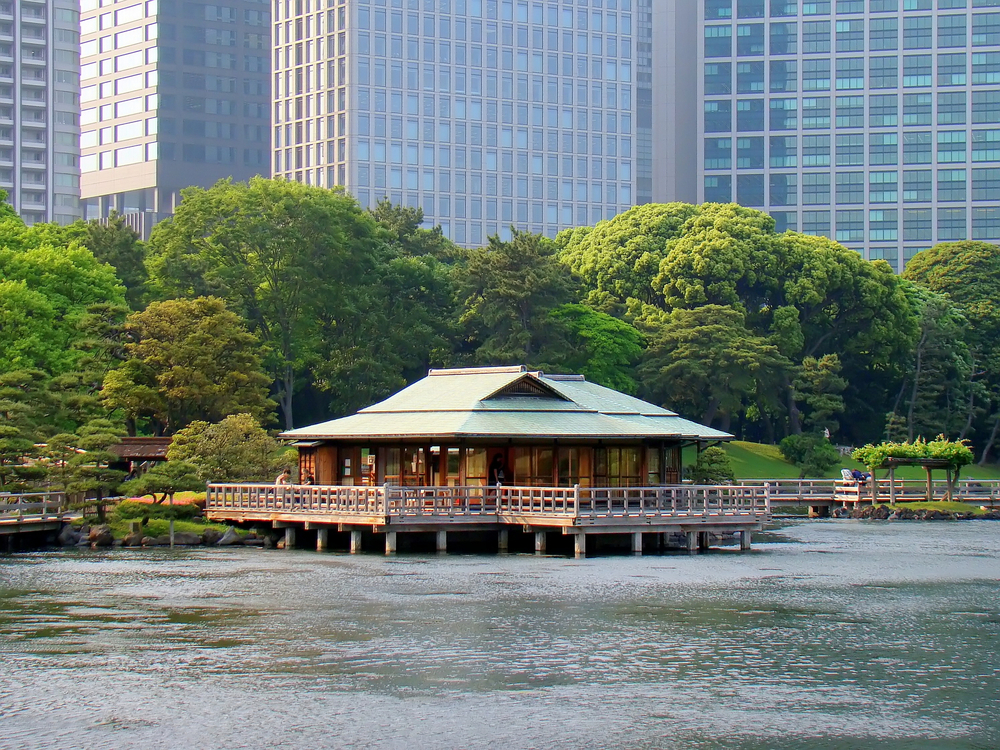
(Source: Shutterstock)
2. Hamarikyu Gardens
A break from the concrete jungle of Tokyo is never far away with the city’s abundance of parks and gardens. One such heralded spot is none other than Hamarikyu Gardens, located just ten minutes walk away from Tsukiji Station. These magnificent gardens were once upon a time the residence of a feudal lord but became publicly accessible after 1945. The foliage with a number of plum and cherry trees to bloom in spring and striking autumn foliage to enjoy between October and November. There is also a teahouse that sits in the middle of a pond where you can enjoy a cup of tea and perhaps be inspired enough to write a line of haiku or two as you take in the captivating sights of nature.
Check their website for the most up-to-date information on opening times and dates before heading out.
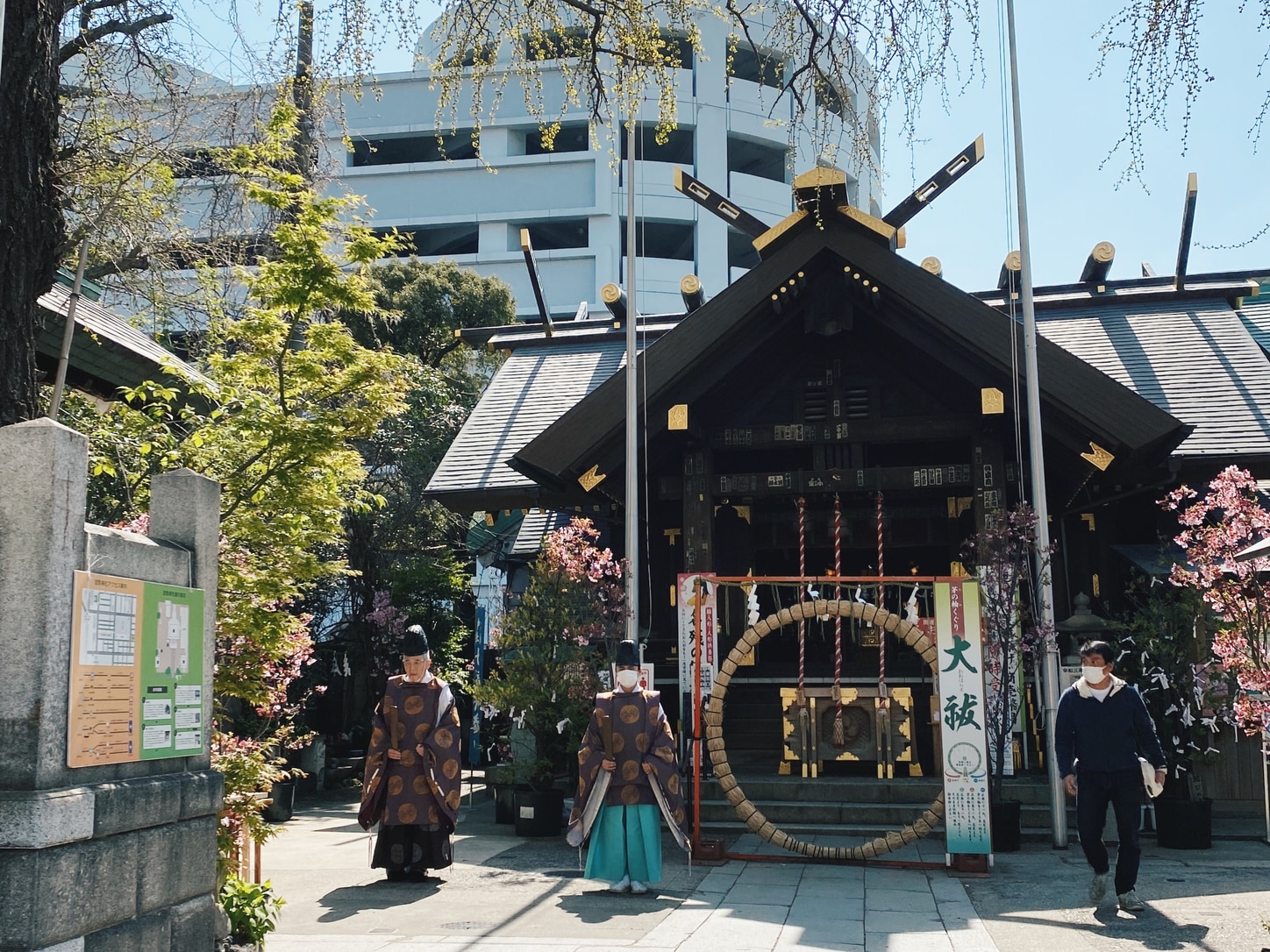
3. Namiyoke Inari Shrine
Considering the fish market legacy of Tsukiji, it’s only apt to pay your respects at Namiyoke Inari Shrine when in the neighborhood. Tsukiji was originally built on reclaimed land and was highly susceptible to flooding. Thus began the tradition of praying to the god enshrined in Namiyoke (its name literally means “to protect from waves”). The shrine still remains a guarding to the marketplace and its traders and holds many items of significance, including two lion statues with the belief that they would keep the waters calm.
4. Tsukiji Outer Market
Many will be surprised to know that the outer market still remains and is a must-visit location for voracious eaters of the seafood variety. There’s no shortage of sushi restaurants, sashimi stands and of course, famous tamagoyaki sellers. If you’re not into fishy business, there’s also an old school coffee shop, a few peddling wagyu on a stick and a decent-sized yakitori shop. While you’re digesting and inspired to perhaps tackle cooking at home, find specialty stores selling shokunin knives and Japan-made bowls and chopsticks. Just be sure to come here early in the day as everyone tends to pack up between 2 and 3 pm.
5. Kabuki-za Theatre
Those enchanted with Japanese arts and theatre should not skip a visit to Kabuki-za. Kabuki, a type of classic Japanese song, dance and drama, has over 400 years of history and is heralded as one of Japan’s greatest performing arts. The Kabuki-za Theatre itself is the only theatre in the world solely dedicated to kabuki with various features within it built to create such a space where the art can be enjoyed. Whether you’re a theatre buff or not, consider purchasing single-act tickets that are available on the day of a show to get just a sample of what the world of kabuki is really like. If nothing else, a wander past the theatre to admire the architecture and its history of the years will be sure to conjure up the exciting atmosphere and buzz of the performance.
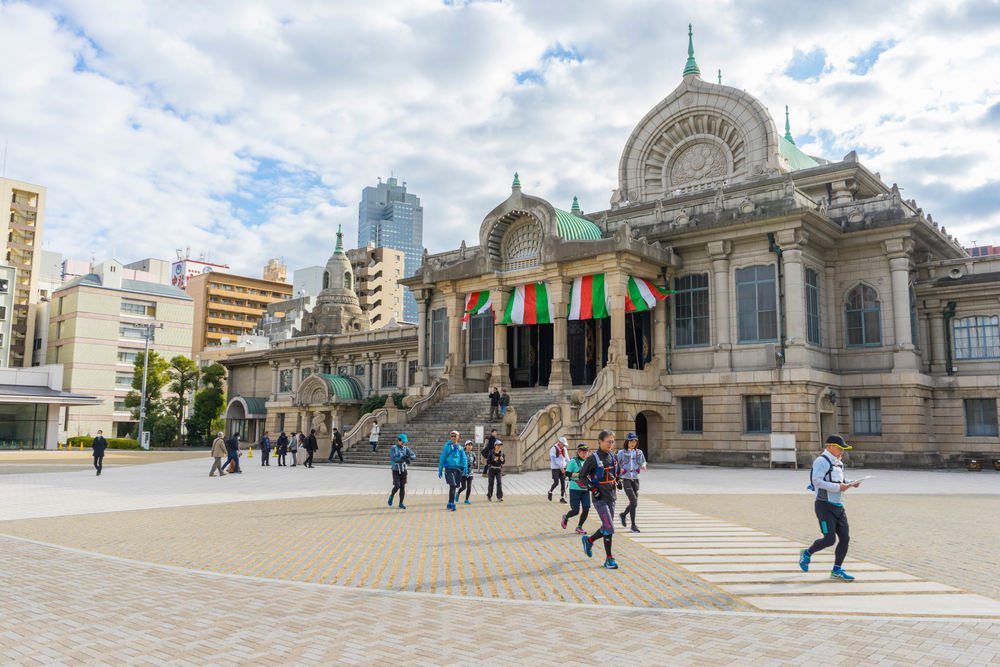
(Source: Shutterstock)
6. Tsukiji Hongan-ji
Tsukiji Hongan-ji, a Buddhist temple belonging to the Shin Buddhism denomination and is unlike anything you will see in Japan. This latest construction is actually the third rebuild following a fire in its original location in Asakusa during the 17th century as well as a second fire caused by the Great Kanto Earthquake in 1929. Designed by architect Ito Chuta (Heian Jingu Shrine, Kyoto and Meiji Jingu Shrine, Harajuku), the temple bears striking features much like other ancient Buddhist monuments found in India. Many interesting motifs decorate its halls including carvings of Japanese yokai and animals revered in Chinese legends such as peacocks, phoenixes and dragons. Don’t miss the large pipe organ inside the main worship hall consisting of 2,000 pipes and curiously, the memorial of X-Japan’s guitarist, Hideto Matsumoto.
All photos by Samantha Low unless otherwise stated.
More things to do in the area:

